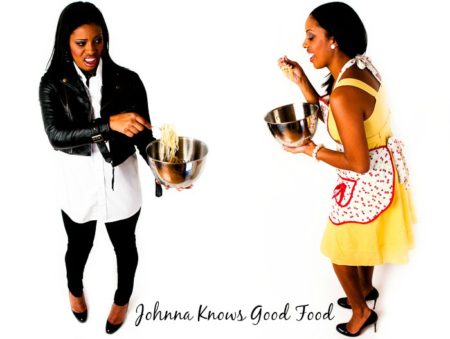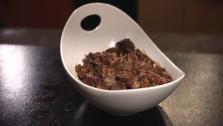How to Plastic Wrap Food Correctly
Some scenarios are common in many homes and restaurants. You pull off a plastic wrap square to secure your leftovers so you can still eat them the next day. However, you’re in a rush, and you accidentally slipped on the twisting package. Your palms were able to get a slight brush on the box’s sharp metal teeth, and the plastic didn’t come off cleanly.
Regardless, you start covering the unevenly torn plastic into the food, and you try to stretch it from one corner to the other. It didn’t stay, and you tried again with a larger piece of plastic, but it didn’t work. For some, their day is ruined, or they may be so frustrated and forget about it, but their edibles are still not wrapped.
If you’re tired of this situation, it’s best to start doing what the professional masters in hotels do. They have a technique to encase the food tightly and make the cling wrap go around the dish. This will result in tightly wrapped food where the plastic will adhere itself to the meat entree as it is meant to do. Instead of using glass or ceramic that will only work some of the time, you can get reusable plastic wrap dispensers or food-grade cling films that will make your life easier. Here’s how to do this right.
1. Set the Dispenser on the Table
Put the plastic dispenser on the table where it will be parallel to the food you will wrap.
2. Hold the Box Firmly
When you’re pulling out the plastic wrap, hold the box firmly and in a downward direction. Pull out the wrap and make sure that it’s twice as long as the food you want to cover. Stretch the thin film across the table, or you can hang it down in front of you. However, don’t detach it from its box.
3. Place the Dish on the Plastic
Place the food that you want to wrap near the box and on top of the plastic.
4. Start Covering
Gently pull from the loose ends and do it in a taut way to be more secure regardless of wherever it will land. If the loose ends tend to be longer than the food, slightly lift up the sides close to the box. Tuck them securely underneath. If you have a film that’s too short, pull more of the plastic until the top is completely covered and make sure to leave a few inches extra of an overhang.
Secure the entire wrap by ripping the edge from the storage box’s teeth. Pull the ripped ends tautly and layer the plastic on top.
5. Repeat whenever Necessary
If you have a casserole that’s wider than your plastic wrap, it’s best to perform the steps twice and give some extra plastic on the right or left part so the edges will be covered entirely. The approved method is to have at least three separate layers, so the aroma of the food can be retained. This will also prevent the other smells in your fridge from getting into the dish.
When you’re removing the plastic, never try to peel it. You just have to get a knife and make shallow cuts in the middle and sides. Pull the plastic away at the edges. If you don’t have a proper storage container and wouldn’t want to find the beef steak sloshing at the back of the car, this trick can be pretty valuable.
Different Types to Know About
Now that you have an idea of how to wrap your dish, it’s time to choose a cling wrap that will make your spring rolls fresh and hot. It’s worth noting that three different types are used in shrink wrapping: polyethylene, polyolefin, and polyvinyl chloride. Each of them has specific applications and different capabilities that can increase the shelf life of your food.
Polyvinyl Chloride
PVC or polyvinyl chloride is more affordable, lightweight, and multi-purpose. This was once the most used shrink packaging worldwide, but it gave way to polyolefin and polyethylene for various reasons. For one, it has a lot of health dangers during the process of incineration and creation. In its rigid form, PVC is often used in houseware products and construction projects.
However, it has a bad rap because of the combination of chlorine, hydrogen, and carbon. Because of the harmful and strong odors it produces, it’s recommended to be only used in a well-ventilated room. It’s banned altogether in some countries because of the harmful by-products that are created in the manufacturing process.
Another downside is that PVC is more sensitive when the temperature changes. It becomes brittle in cold weather, and it can shrink during hot temperatures. However, this is still used in many non-edible items today.
Polyolefin
Polyolefin is versatile and highly durable. This is a premium option, and it is a food-safe material that’s gotten approval from the FDA. The POF materials have incredible clarity and high tensile strength. Because of the POF’s strength, you can roll longer films that can increase your productivity and efficiency. It has seal strength and is puncture resistant that can help pack irregularly shaped items. Learn more about the polyolefin material on this page here.
It has a reasonable cost and versatility that’s a go-to option for many manufacturers. However, it may require additional perforations or tiny holes before it can be applied to the dish. The holes will allow the air to escape during the process of shrinking. It’s primarily used on foods, candies, and other retail items.
Polyethylene
Polyethylene is another type of polyolefin that’s used in flexible protective packaging. The linear low-density polyethylene does not shrink a lot compared to other films. They can protect heavy loads during transport, and it performs differently when it comes to packaging protection. It’s used in frozen foods, snacks, and other dishes.
Also, it’s common in beverage multipacks because of additional durability and strength, and they are also printable. You can add clear graphics to them, and they can maintain their image without any problems.
Category: Food.Fun.Stuff.









